Subjects
General Awareness (GA)
Miscellaneous
General Science
Mathematics
Pharmacy
General Intelligence
English Language
Pharmacognosy
Current Affairs
Pharmacology
सामान्य हिन्दी
Books and Authors
Indian history
General Science (GS)
Chemistry
Biology
Physics
Parts of Speech
One Word Substitutions
Health Education
Human Anatomy and Physiology
Microbiology
Zoology
Botany
Bio Organic Chemistry
Biochemistry
Reasoning
Pharmaceutical Jurisprudence
General Pharmacology
Pharmaceutics
World Geography
Geography of India
Pharmaceutical Chemistry (Inorganic)
Pharmaceutical Organic Chemistry
Drug Store and Business Management
Hospital and Clinical Pharmacy
Indian Art, Culture and Heritage
World History
Computer
Pathophysiology
Community Health Nursing
Blog Categories
informative non-academics blog posts coming soon..
Courses
Courses section is Coming soon..
Tags
biochemistry (32)
biochemistry notes (22)
biology mcqs for neet (20)
english (31)
free neet preparation (20)
general awareness (27)
general knowledge (41)
government job (68)
government jobs (21)
indian geography (24)
indian history (49)
medieval indian history (22)
neet class 11th (20)
neet ug 2024 (33)
neet ug exam 2024 (26)
neet ug practice (26)
neet ug practice questions (31)
pharmacist (24)
pharmacist exams (20)
pharmacy (50)
pharmacy exams (33)
pharmacy notes (26)
pharmacy practice (24)
pharmacy revision (24)
static gk (46)
Universities
Colleges and Universities section is Coming soon..
Exams
Under Construction..
Class 11th
About
Updates
All

How did British rule affect the Indian Villages and what are the changes introduced by them in India ?
Once the British gained power, they introduced many changes in the Economic, Political, and Social spheres. We have seen that India in the 1750s saw the decline of the Mughal Empire and the emergence of Successor States.The British who came to India for trade become the rulers of territories.
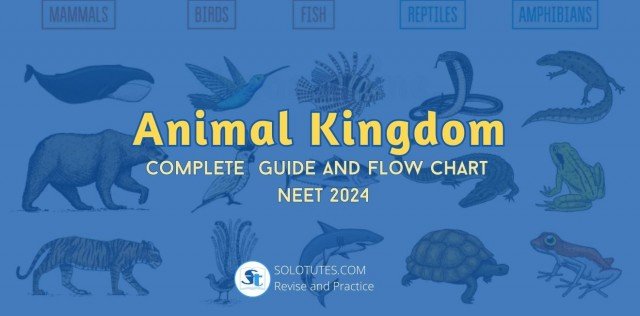
Complete Guide to Animal Kingdom Flowchart NEET 2024
Animals have several characteristics that set them apart from other living things. Animals are eukaryotic and multicellular, heterotrophic eukaryotes with aerobic respiration, sexual reproduction, and the ability to move. Let us learn about the animal kingdom flowchart, i.e., Kingdom Animalia.
Classification of Animal Kingdom is based on a different basis, i.e., arrangement of cells, body symmetry, nature of coelom, and patterns of digestive, circulatory, or reproductive systems.
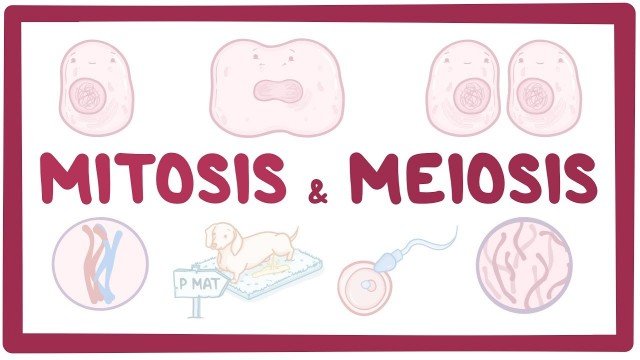
Mitosis and Meosis
Cell division is the process by which a cell divides into two or more daughter cells. It is a fundamental process for growth, development, and reproduction in living organisms. Cell division occurs through two main mechanisms: mitosis and meiosis.
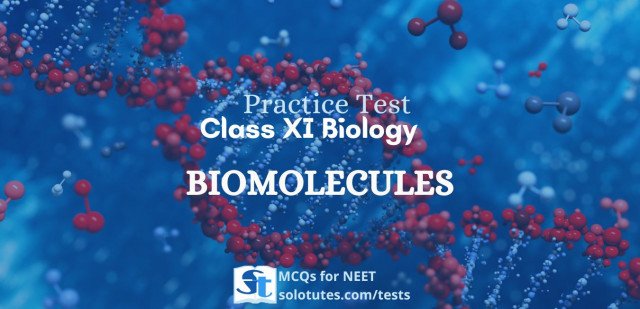
Biomolecules : Biology Revision Test (Class 11th) | MCQs for NEET
This practice test contains 25 most important MCQ questions from the chapter Biomolecules Class 11th Biology.

Excretory system
In humans, the excretory system consists of one pair of kidneys, a pair of ureters, a urinary bladder and a urethra. Each kidney has over a million tu

Excretory system - (Class 11th Biology) Revision Test | MCQs For NEET
This practice test includes 25 questions from chapter excretory system class 11.

Cell Division and Cell Cycle (Class 11th Biology) Revision Test | MCQs For NEET
Pratice these important questions from the chapter - cell division and cell cycle (class 11th Biology) for the viva, neet, and other competitive entrance exams.

Cell Division And Cell Cycle
All organisms are made of cells or aggregates of cells. Cells vary in their shape, size and activities/functions. Based on the presence or absence of

Plant Growth And Development
Growth is one of the most conspicuous events in any living organism. It is an irreversible increase expressed in parameters such as size, area, length

Plant Growth and Development (Class-11th Biology) Revision Test | MCQs For NEET
This practice test includes 25 questions from chapter Plant Growth And Development class 11.

Respiration In Plants
Plants unlike animals have no special systems for breathing or gaseous exchange. Stomata and lenticels allow gaseous exchange by diffusion. Almost all

Respiration in plants - (Class 11th Biology) Revision Test | MCQs for NEET
This practice test includes 25 questions from chapter Respiration In Plants Class 11.

Photosynthesis In Plants
Green plants make their own food by photosynthesis. During this process carbon dioxide from the atmosphere is taken in by leaves through stomata and u

Mineral nutrition (Class 11th Biology) Revision Test | MCQs for NEET
This practice test includes 25 questions from chapter Mineral Nutrition Class 11.
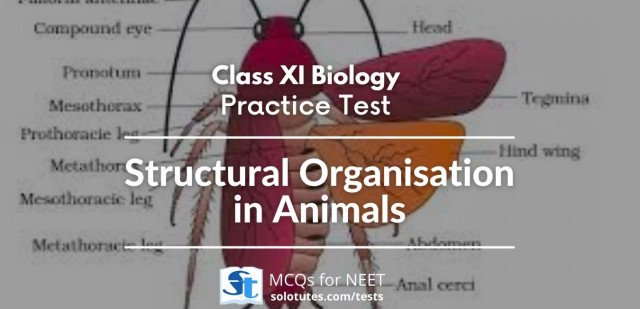
Structural Organisation in Animals Biology (Class 11th) Revision Test | MCQs for NEET
This practice test includes 25 important multiple choice questions from the chapter structural Organisation In Animals Class 11th Biology. These MCQs are also very helpful for neet and other competitive entrance exams after 10+2 (12th class). so practice, revise and check your progress of preparation.

Animal kingdom (Class 11th Biology) Revision Test | MCQs for NEET
This practice test includes 25 questions from chapter Animal Kingdom Class 11 .
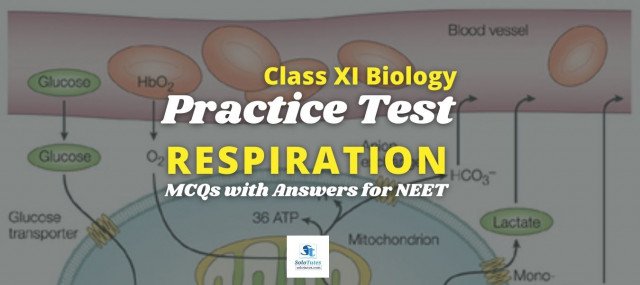
Respiration Class 11th Biology | Practice MCQs with Answers for NEET
Practice these important 25 questions from the chapter respiration (biology 11th class).

Practice test : Biological Classification (Biology class 11th) | Practice MCQs for NEET
Practice these 25 important Questions in Biological Classification class 11th Biology and score better in your exams like NEET or other college entrance exams after 12th.
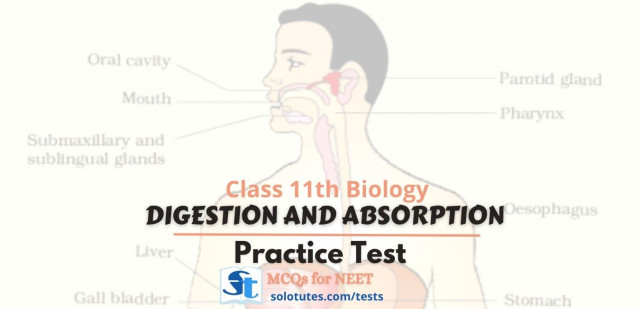
Practice MCQs for NEET : Digestion and Absorption Class 11th
Practice these important questions from the digestion and absorption chapter in class 11th biology for neet and other exams preparation.
Recruitment/Jobs
Updates
Revision Notes

How did British rule affect the Indian Villages and what are the changes introduced by them in India ?
Once the British gained power, they introduced many changes in the Economic, Political, and Social spheres. We have seen that India in the 1750s saw the decline of the Mughal Empire and the emergence of Successor States.The British who came to India for trade become the rulers of territories.

Complete Guide to Animal Kingdom Flowchart NEET 2024
Animals have several characteristics that set them apart from other living things. Animals are eukaryotic and multicellular, heterotrophic eukaryotes with aerobic respiration, sexual reproduction, and the ability to move. Let us learn about the animal kingdom flowchart, i.e., Kingdom Animalia.
Classification of Animal Kingdom is based on a different basis, i.e., arrangement of cells, body symmetry, nature of coelom, and patterns of digestive, circulatory, or reproductive systems.

Mitosis and Meosis
Cell division is the process by which a cell divides into two or more daughter cells. It is a fundamental process for growth, development, and reproduction in living organisms. Cell division occurs through two main mechanisms: mitosis and meiosis.

Excretory system
In humans, the excretory system consists of one pair of kidneys, a pair of ureters, a urinary bladder and a urethra. Each kidney has over a million tu

Cell Division And Cell Cycle
All organisms are made of cells or aggregates of cells. Cells vary in their shape, size and activities/functions. Based on the presence or absence of

Plant Growth And Development
Growth is one of the most conspicuous events in any living organism. It is an irreversible increase expressed in parameters such as size, area, length

Respiration In Plants
Plants unlike animals have no special systems for breathing or gaseous exchange. Stomata and lenticels allow gaseous exchange by diffusion. Almost all

Photosynthesis In Plants
Green plants make their own food by photosynthesis. During this process carbon dioxide from the atmosphere is taken in by leaves through stomata and u
Practice

Biomolecules : Biology Revision Test (Class 11th) | MCQs for NEET
This practice test contains 25 most important MCQ questions from the chapter Biomolecules Class 11th Biology.

Excretory system - (Class 11th Biology) Revision Test | MCQs For NEET
This practice test includes 25 questions from chapter excretory system class 11.

Cell Division and Cell Cycle (Class 11th Biology) Revision Test | MCQs For NEET
Pratice these important questions from the chapter - cell division and cell cycle (class 11th Biology) for the viva, neet, and other competitive entrance exams.

Plant Growth and Development (Class-11th Biology) Revision Test | MCQs For NEET
This practice test includes 25 questions from chapter Plant Growth And Development class 11.

Respiration in plants - (Class 11th Biology) Revision Test | MCQs for NEET
This practice test includes 25 questions from chapter Respiration In Plants Class 11.

Mineral nutrition (Class 11th Biology) Revision Test | MCQs for NEET
This practice test includes 25 questions from chapter Mineral Nutrition Class 11.

Structural Organisation in Animals Biology (Class 11th) Revision Test | MCQs for NEET
This practice test includes 25 important multiple choice questions from the chapter structural Organisation In Animals Class 11th Biology. These MCQs are also very helpful for neet and other competitive entrance exams after 10+2 (12th class). so practice, revise and check your progress of preparation.

Animal kingdom (Class 11th Biology) Revision Test | MCQs for NEET
This practice test includes 25 questions from chapter Animal Kingdom Class 11 .

Respiration Class 11th Biology | Practice MCQs with Answers for NEET
Practice these important 25 questions from the chapter respiration (biology 11th class).

Practice test : Biological Classification (Biology class 11th) | Practice MCQs for NEET
Practice these 25 important Questions in Biological Classification class 11th Biology and score better in your exams like NEET or other college entrance exams after 12th.

Practice MCQs for NEET : Digestion and Absorption Class 11th
Practice these important questions from the digestion and absorption chapter in class 11th biology for neet and other exams preparation.
Syllabus
on development...Reviews
on development...
.png)
